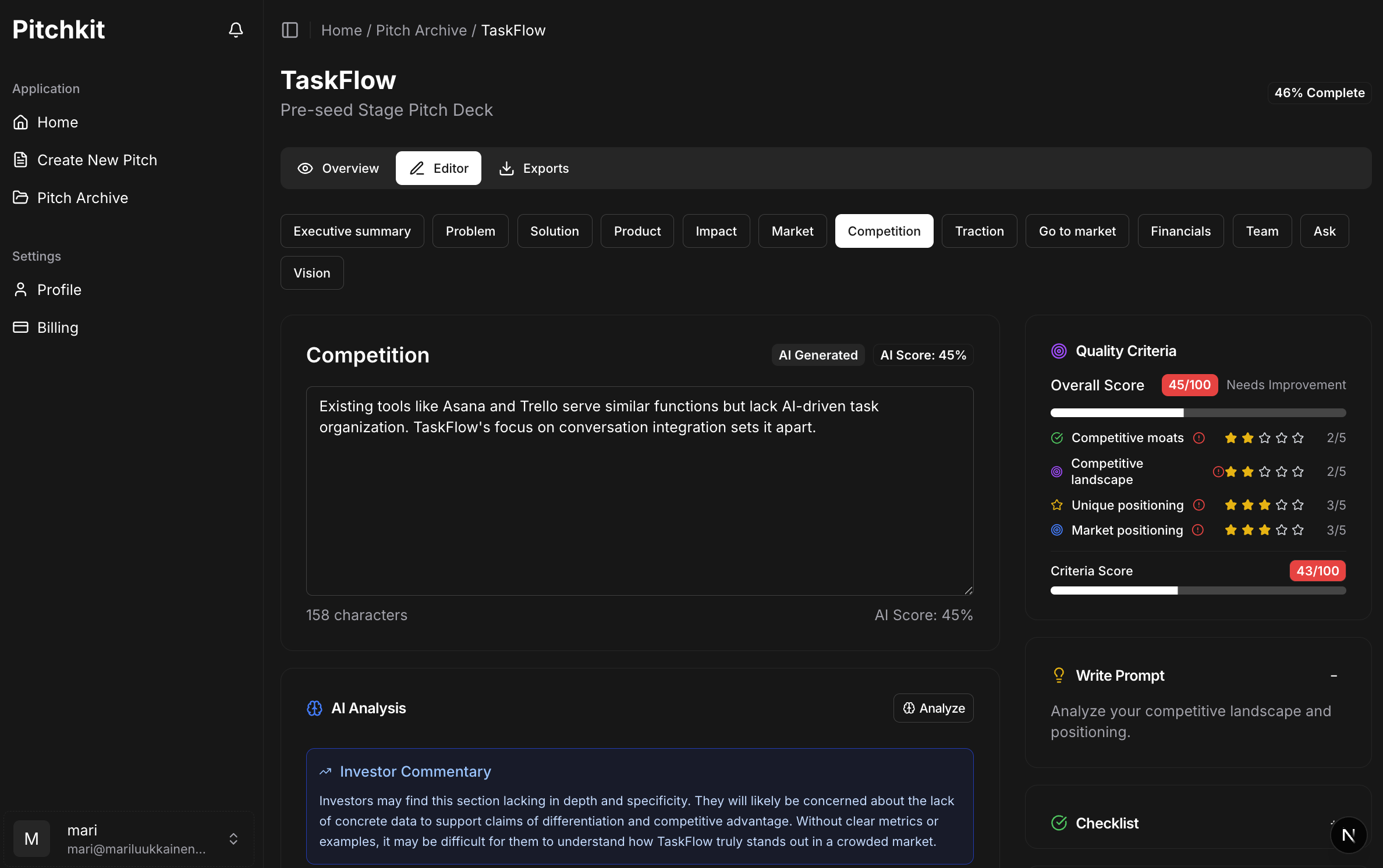I built and monetized a SaaS in 6 days - what’s stopping you?
Three months ago, I opened Cursor on a flight just to try it out. I ended up vibe coding non-stop. Now I’ve logged 990 GitHub commits, left my full-time VC role, and entered a self-assigned mini-retirement. Still a Venture Partner, still involved, but day-to-day, I’m building and shipping again.
So here’s what happened: six days into this break, I shipped a SaaS and made money with it. No team, no roadmap, no deck.
My first product is called Pitchkit.
The actual pain point: bad pitches from good founders
After years in VC, one thing’s clear - most founders are smart, but their storytelling sucks. Every week I’ve reviewed dozens of decks, and even strong ideas get buried under layers of confusion, buzzwords, and irrelevant market noise.
Founders don’t understand what happens inside the VC process. If your story takes too long to explain internally, it’s dead. Nobody’s going to spend over 5 minutes decoding your market map and thesis when the next deck is already loading.
Pitchkit is built to fix this. It gives founders the investor perspective early, before they waste time building slides that don’t land.

What it does
It’s a structured, logic-first pitch builder. You build your narrative and Pitchkit keeps it aligned with how investors actually read and think.
- A dashboard for editing and versioning your pitch narrative
- Pre-built blocks based on real investor expectations
- Scoring on clarity and coherence, focused on funding logic - not writing style
- Modular structure so you can test different angles without rewriting from scratch
- Exportable copy for blurbs, emails, outreach messages
I also added a public roadmap where users can suggest features. If something gets asked enough, I build it.
The actual build process
Cursor made this easy to start and horrible to finish. It’s great for coding in flow, terrible for remembering where your API keys went. Still, I’d take that trade any day.
Vercel env setup was an untracked mess. Supabase got scrapped and restructured maybe ten times before the schema made sense. Stripe integration took longer than I want to admit, mostly because I overcomplicated it. I forgot to include a paywall before launch and patched that in an hour after someone asked where to pay. That’s how fast you should be moving at this stage.
I didn’t write a PRD. I didn’t plan a launch. I shipped and posted about it.

First paying customers came from showing my work
I just posted about what I was building and why. That’s it. No launch strategy. No email list. Just clarity, timing, and an audience that’s fed up with the same deck template advice being recycled over and over again.
People found it. Some paid. Now it’s worth continuing.

If you have domain expertise, you can do this too
Most people sit on product potential without realizing it. If you’ve done real work in a specific space - legal, hiring, education, whatever - you don’t need a co-founder or a dev team. You just need to structure your expertise into something usable.
You write your core logic in a prompt file, wrap a basic UI around it, and ship it as a tool. That’s it. Doesn’t need to scale. Doesn’t need to be beautiful. It just needs to solve one pain point faster than a PowerPoint.
If you’re a non-technical founder, here’s the thing: you’re not blocked by code. You’re blocked by hesitation. You’re waiting for a technical co-founder, an agency, a grant, or someone else to give you permission to build. That wait kills momentum faster than anything.
I’m not a trained developer either. I just opened Cursor, made a mess, Googled a lot, and kept shipping. You don’t need to know everything - you need to know enough to move. Modern stacks like Next.js, Supabase, and Vercel are brutal at first, but they’re learnable. And once you get the basics down, you can do damage.
Your edge isn’t clean code. Your edge is knowing a space well enough to build the right thing. When you can combine that with even basic technical execution, you stop being dependent. You stop needing someone else to build your vision. That changes everything.
If you know your customer, you should be shipping. Doesn’t matter if it’s ugly. Doesn’t matter if it breaks. Doesn’t matter if no one uses v1. Build it anyway. Put it in front of real people and see what happens.
You don’t need to become a developer. You just need to stop outsourcing momentum.
What’s next?
Another product. I’m doing a couple of GTM cases during the summer, and building a GTM iteration tool - something that replaces decks, mirrors real-world traction-building, and doesn’t assume you’re a marketer.
I’ll ship fast again. If people use it, I’ll keep going. If not, next thing.
That’s the rhythm now.
No spam, no sharing to third party. Only you and me.
